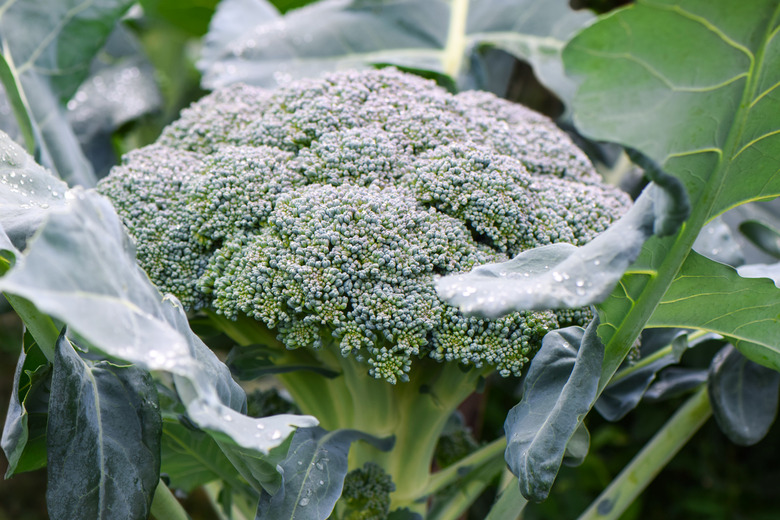Stages Of Broccoli Growth
The treelike heads of broccoli you put on the dinner table are actually the immature flower buds of the plant Brassica oleracea (Italica Group). Broccoli is a cool-weather cole crop closely related to cauliflower — another large, flowering head often grown in the vegetable garden — as well as cabbage, kale, and Brussels sprouts.
Broccoli is typically planted in spring, preferably early enough so that the head can develop before the arrival of hot temperatures in summer. In some climates, gardeners can plant in late summer for harvest in the fall. Depending on the variety, broccoli takes from 85 to 100 days to fully mature from seed. Broccoli can be grown by seed or transplanted into the garden.
Germinating Broccoli Seeds
The broccoli plant's first stage is seed germination. Seeds can be planted directly in the ground as long as the soil temperature is above 40 degrees Fahrenheit, but starting seeds indoors allows you to get a jump-start on the growing season. Sow broccoli seeds indoors in seed-starting mix six to eight weeks before the last spring frost date. Keep the mix moist and at about 75 degrees until the seeds sprout. After sprouting, the seedlings can be moved to a cooler spot at around 60 degrees.
For fall plantings, sow seeds outdoors 85 to 100 days before the first frost date and keep the soil consistently moist. This approach is often used in hot climates. Use a full-season or late-season variety if planting later in the year.
Transplanting Broccoli Plants
Whether you grow your own seeds or purchase broccoli, these cold-hardy plants can be transplanted outdoors in spring around two weeks before the final frost date. At this point, the plants should have moved beyond the first set of leaves and have four or five fully mature leaves. Plant the seedlings 12 to 20 inches apart in rows that are 3 feet apart. Keep the soil consistently moist, mulching around the plants to help maintain a cool soil temperature and prevent weeds. Cabbage worms are frequently a problem for broccoli plants, so consider using row covers over the plants until they grow larger.
Development of the Stem and Head
The plants will grow 2 to 3 feet tall, with the stem thickening as the plant develops. Popular market varieties will develop a large, central head on top of the main stem. Some broccoli varieties develop multiple smaller heads.
Broccoli is ready to harvest once the main head stops increasing in size and the buds are deep green and tightly packed. If buds begin to loosen or any sign of yellow begins to peek through, harvest immediately. To harvest, cut the main stem about 6 inches below the head. After harvest, many broccoli plants will continue to produce small florets on side shoots until the plant bolts in hot summer weather.
Broccoli Flowering and Seeding
At the end of the growing season, any unharvested florets will begin to flower. The small buds open into clusters of cheerful yellow flowers. The edible flowers can be tossed onto salads or left in the garden for the bees to enjoy. Once the flowers are pollinated, they will produce seed, and the plant will eventually die. Though you can save the seed, broccoli can cross-pollinate with other cole crops, so the seed could produce unpredictable results.
